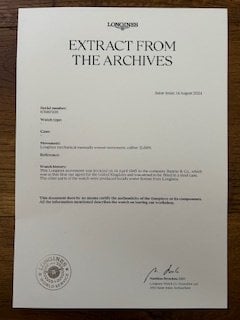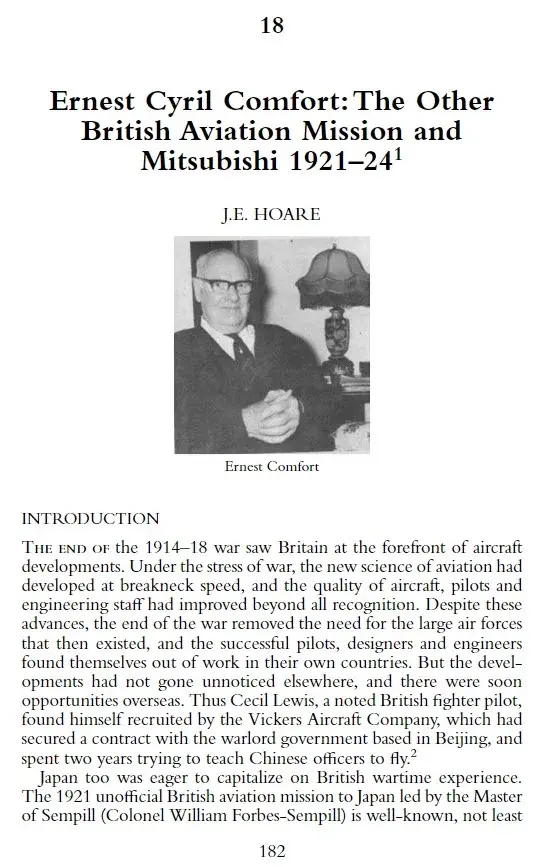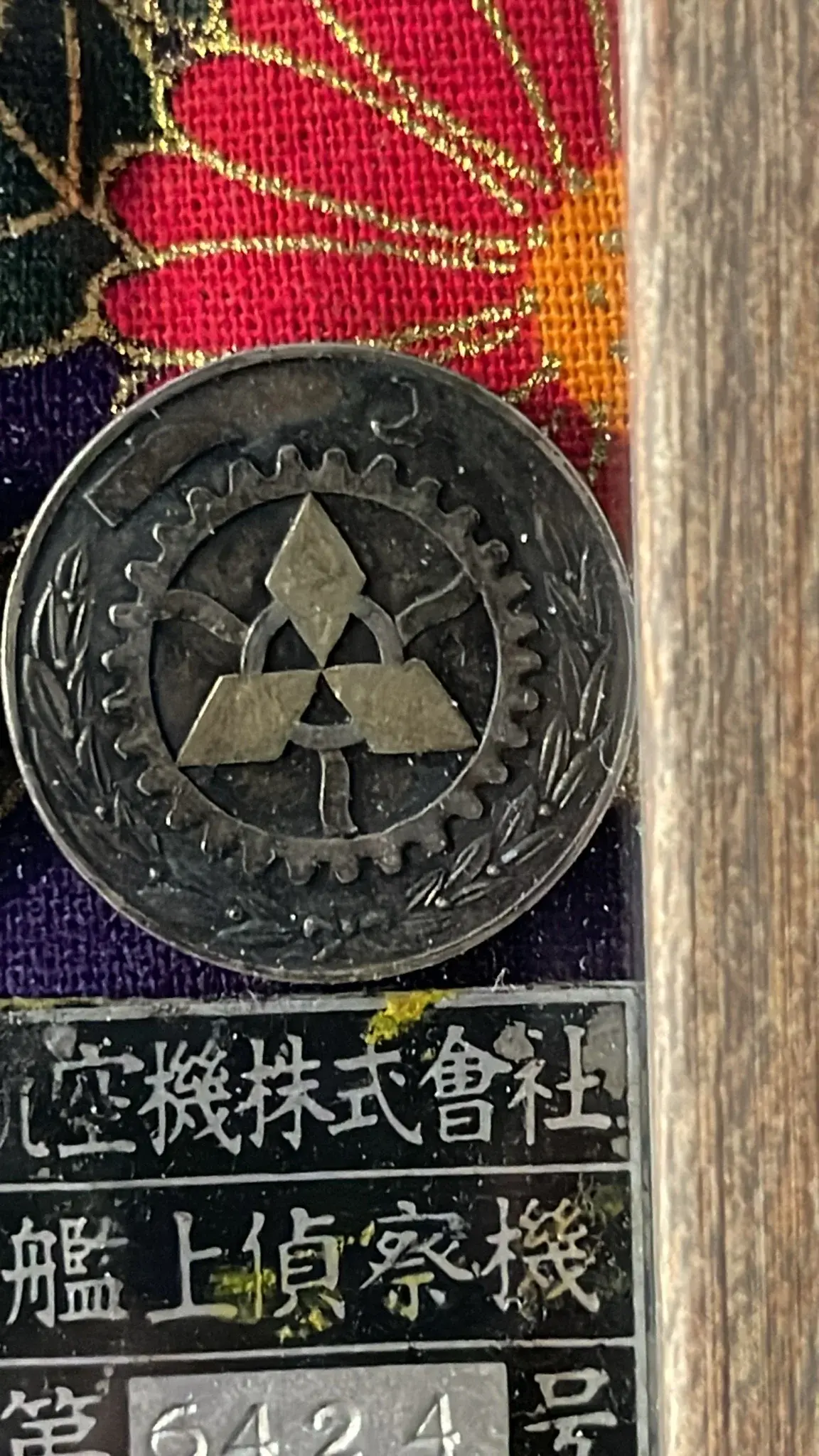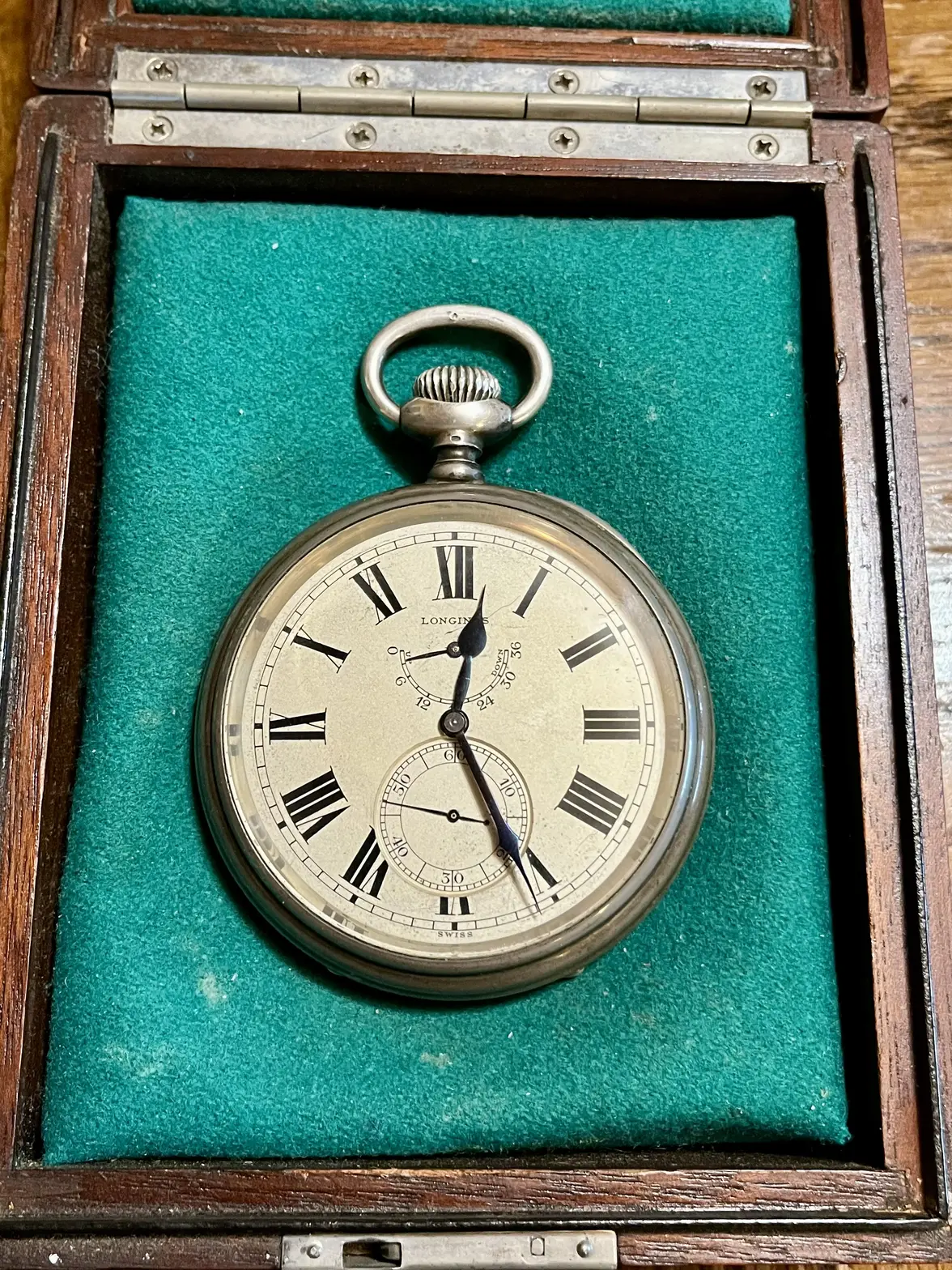Anyone have a historical watch?
Lépine
·This next historical watch goes back to this photo which maybe related to the watch from best guesses at this point.
It is one of the Sparrowhawks as you might remember being delivered to the Imperial Japanese Navy. Note that this is
another similar photo to the one that is floating about on the internet. That photo is in an Autrailian Air Museum.
This photo is a second photo also taken at the same time and place in England at the Gloucesteshire Gloster Aircraft Company.
Note: The aircraft does not have the hinomaru (Red Sun) painted on it yet.

This is what the aircraft will eventually look like.

As you have read in my earlier posts, this is one of the Sparrowhawks that during the experimental phase was being launched from battleships and aircraft tenders.

This story would be nothing more than a repeat of the Mark V I found earlier this year if it wasn't for the fact that I found another unusual find.

This is another 1920s pocket watch issued to the Imperial Japanese Navy.
It has some really interesting details of which the IJN markings are of course the most impressive.
The style of the kanji characters is unmistakeably Japanese imitating the brush strokes of calligraphy artists.
This is the kaisho style of writing. In the Japanese military you often see kaisho and reisho style which helps authenticate
genuine markings as most Westeners do not know the different kanji styles and choose the wrong styles or period for fakes
or simply make childrens scratch marks that are complete nonsense.



The 1910s-1920s was a period of incredibly rapidly changing times for the development of aircraft. We started with
designs that looked like Di Vinci's imagination of a flying machine to actual motorized kits that could barely lift a man.

To armies of these bi-planes.

And so too did the watches. You can see many different stages of evolution of the flight clocks in this advertisement.

You can also see some of the other purposes the watch makers were using to sell their newly developed aviator chronographs.

Some of the examples on pilots. Now I don't want to mislead you into thinking I found a Russian Pilots Longines, but they
are interesting to point out that aviation by WW1 had evolved to the point that pilots needed chronographs.




No, my watch is not a Longines. It is distinctly British. As we know the Sempill Mission was a major turning point
in Japanese aviation history.

The Mark IV and Mark V were the watch/clocks installed on the early biplanes. Many biplanes of which were sold to the IJN.


So here was a curious maker that I had not paid much attention to until now.



There is a distinct relationship between the S.Smith&Son Co and the makers of the IJN Sparrowhawk and possibly other models.








And this is the best evidence of them all. The Gloster Sparrowhawk is a Gloster Mars which is a Nieuport


And it was the fastest fighter plane of it's time

The pictures below are the Sparrowhawk and the world's first aircraft carrier, both designed with British help.


Where's the watch? I've kept you waiting long enough. This is a major discovery in my opinion.



And what is it exactly? It is an Edouard Heuer.







We found one of the first ever created Imperial Japanese Navy aviation chronographs made by Ed Heuer sold by the aircraft instrument maker S.Smith&Son that built the instrumentation for the Gloster Mars aircrafts. I have not found evidence of the instruments onboard the Sparrowhawks but maybe that is very likely at this point. After several weeks of research, it appears I may need to start contacting more sources to findout about the Sparrowhawk instrumentation. I don't beleive any Sparrowhawk still exists.
But, at least we know the Nieuports/Gloucestershire/Gloster are all the same aircraft.

If you enjoyed this post, please let me know 😀
It is one of the Sparrowhawks as you might remember being delivered to the Imperial Japanese Navy. Note that this is
another similar photo to the one that is floating about on the internet. That photo is in an Autrailian Air Museum.
This photo is a second photo also taken at the same time and place in England at the Gloucesteshire Gloster Aircraft Company.
Note: The aircraft does not have the hinomaru (Red Sun) painted on it yet.

This is what the aircraft will eventually look like.

As you have read in my earlier posts, this is one of the Sparrowhawks that during the experimental phase was being launched from battleships and aircraft tenders.

This story would be nothing more than a repeat of the Mark V I found earlier this year if it wasn't for the fact that I found another unusual find.

This is another 1920s pocket watch issued to the Imperial Japanese Navy.
It has some really interesting details of which the IJN markings are of course the most impressive.
The style of the kanji characters is unmistakeably Japanese imitating the brush strokes of calligraphy artists.
This is the kaisho style of writing. In the Japanese military you often see kaisho and reisho style which helps authenticate
genuine markings as most Westeners do not know the different kanji styles and choose the wrong styles or period for fakes
or simply make childrens scratch marks that are complete nonsense.



The 1910s-1920s was a period of incredibly rapidly changing times for the development of aircraft. We started with
designs that looked like Di Vinci's imagination of a flying machine to actual motorized kits that could barely lift a man.

To armies of these bi-planes.

And so too did the watches. You can see many different stages of evolution of the flight clocks in this advertisement.

You can also see some of the other purposes the watch makers were using to sell their newly developed aviator chronographs.

Some of the examples on pilots. Now I don't want to mislead you into thinking I found a Russian Pilots Longines, but they
are interesting to point out that aviation by WW1 had evolved to the point that pilots needed chronographs.




No, my watch is not a Longines. It is distinctly British. As we know the Sempill Mission was a major turning point
in Japanese aviation history.

The Mark IV and Mark V were the watch/clocks installed on the early biplanes. Many biplanes of which were sold to the IJN.


So here was a curious maker that I had not paid much attention to until now.



There is a distinct relationship between the S.Smith&Son Co and the makers of the IJN Sparrowhawk and possibly other models.








And this is the best evidence of them all. The Gloster Sparrowhawk is a Gloster Mars which is a Nieuport


And it was the fastest fighter plane of it's time

The pictures below are the Sparrowhawk and the world's first aircraft carrier, both designed with British help.


Where's the watch? I've kept you waiting long enough. This is a major discovery in my opinion.



And what is it exactly? It is an Edouard Heuer.







We found one of the first ever created Imperial Japanese Navy aviation chronographs made by Ed Heuer sold by the aircraft instrument maker S.Smith&Son that built the instrumentation for the Gloster Mars aircrafts. I have not found evidence of the instruments onboard the Sparrowhawks but maybe that is very likely at this point. After several weeks of research, it appears I may need to start contacting more sources to findout about the Sparrowhawk instrumentation. I don't beleive any Sparrowhawk still exists.
But, at least we know the Nieuports/Gloucestershire/Gloster are all the same aircraft.

If you enjoyed this post, please let me know 😀
Edited:
Bernhard J
·If you enjoyed this post, please let me know 😀
noelekal
··Home For Wayward WatchesWhat a post Seiji!
Thank you!
I will have a second cup of tea and read it in depth. There's much to take in!
Thank you!
I will have a second cup of tea and read it in depth. There's much to take in!
Lépine
·This next post is not directly related to the S.Smith&Son watch, but it is interesting for understanding the time period and what the Japanese were witnessing during the 1920s. I believe that the IJA and IJN become very aware of the needs to understand long range navigation by the 1920s. It was a time when many attemps were being made to go around the world. This particular attempt succeeded and the team stopped in Japan as part of the planned trip to refuel and repair their aircraft. Time keeping devices also likely advanced and Heuer was one of the leaders at this time.
This is the United States Army.






This is the United States Army.






ua.wristwatch
·Hello world, newbie here from Ukraine 😀 was started to collect watches from 2019. Now a bit off this things, due to tragical last years in my country. But I'm still reading about watches, repair, study, and have my collection that was increasing till 2022. As this thread about Longines and as a fan of vintage watches of this series, I decided to share some pieces that I have -good day to all Adam-
Lépine
·This is another little known fact even in Japan.
The very first Mitsubishi fighter plan was a British designed aircraft.

And how did this happen? It was not from the Sempill Mission.


While I don't have a Mitsubishi watch. I did find something quite interesting.
This is an original Nagoya Mitsubishi Heavy Industries Aeronautical Division
workers badge. The badge is from the mid 1930s to early 1940s so definitely
during the period Jiro Horikoshi was most active.
Nagoya Mitsubishi is where all the legendary Mitsubishi planes designed by
Jiro Horikoshi (The Zero) were born.


==================================================
==================================================
But this is a watch forum, I don't own this watch but as you all know I have one
very similar and I have been digging for more than a year trying to find details
of how the Longines Weems issued to the IJN were used. I think I have found
one example that seems to match the same useage of others I think I have spotted in
old archive films. Maybe this is more than a coincidence.
There is this person that has been retracing his family history and writing about it on
a private blog. What is interesting is that his relative was a reconnaissance aviator.
And this watch was found at the crash sight that is now the location of a small monument.
They believe it belong to the pilot Takada.
https://note.com/kagerazov/n/n3547f97c9672







The very first Mitsubishi fighter plan was a British designed aircraft.

And how did this happen? It was not from the Sempill Mission.


While I don't have a Mitsubishi watch. I did find something quite interesting.
This is an original Nagoya Mitsubishi Heavy Industries Aeronautical Division
workers badge. The badge is from the mid 1930s to early 1940s so definitely
during the period Jiro Horikoshi was most active.
Nagoya Mitsubishi is where all the legendary Mitsubishi planes designed by
Jiro Horikoshi (The Zero) were born.


==================================================
==================================================
But this is a watch forum, I don't own this watch but as you all know I have one
very similar and I have been digging for more than a year trying to find details
of how the Longines Weems issued to the IJN were used. I think I have found
one example that seems to match the same useage of others I think I have spotted in
old archive films. Maybe this is more than a coincidence.
There is this person that has been retracing his family history and writing about it on
a private blog. What is interesting is that his relative was a reconnaissance aviator.
And this watch was found at the crash sight that is now the location of a small monument.
They believe it belong to the pilot Takada.
https://note.com/kagerazov/n/n3547f97c9672







Edited:
ua.wristwatch
·This is another little known fact even in Japan.
The very first Mitsubishi fighter plan was a British designed aircraft.
And how did this happen? It was not from the Sempill Mission.
While I don't have a Mitsubishi watch. I did find something quite interesting.
This is an original Nagoya Mitsubishi Heavy Industries Aeronautical Division
workers badge. The badge is from the mid 1930s to early 1940s so definitely
during the period Jiro Horikoshi was most active.
Nagoya Mitsubishi is where all the legendary Mitsubishi planes designed by
Jiro Horikoshi (The Zero) were born.
==================================================
==================================================
But this is a watch forum, I don't own this watch but as you all know I have one
very similar and I have been digging for more than a year trying to find details
of how the Longines Weems issued to the IJN were used. I think I have found
one example that seems to match the same useage of others I think I have spotted in
old archive films. Maybe this is more than a coincidence.
There is this person that has been retracing his family history and writing about it on
a private blog. What is interesting is that his relative was a reconnaissance aviator.
And this watch was found at the crash sight that is now the location of a small monument.
They believe it belong to the pilot Takada.
https://note.com/kagerazov/n/n3547f97c9672
Lépine
·river rat
·Old post but I will play with historical watches
Hamilton model 22 US navy deck watch
I got its bigger brother from WW1 a US Navy Longines deck watch incoming.
A deck clock from the HMAS Australia a cruiser from WW2 think first ship to get hit by a kamikaze in WW2 the captain did not make it a sad story.
Here is a watch from WW1 I got a photo of it on the wrist of the original owner
An early pilot watch from the 1930's a Zenith special.
US Army aircraft clock from WW1
Hamilton model 22 US navy deck watch
I got its bigger brother from WW1 a US Navy Longines deck watch incoming.
A deck clock from the HMAS Australia a cruiser from WW2 think first ship to get hit by a kamikaze in WW2 the captain did not make it a sad story.
Here is a watch from WW1 I got a photo of it on the wrist of the original owner
An early pilot watch from the 1930's a Zenith special.
US Army aircraft clock from WW1
pdxleaf
·Old post but I will play with historical watches
Hamilton model 22 US navy deck watch
I got its bigger brother from WW1 a US Navy Longines deck watch incoming.
A deck clock from the HMAS Australia a cruiser from WW2 think first ship to get hit by a kamikaze in WW2 the captain did not make it a sad story.
Here is a watch from WW1 I got a photo of it on the wrist of the original owner
An early pilot watch from the 1930's a Zenith special.
US Army aircraft clock from WW1







































